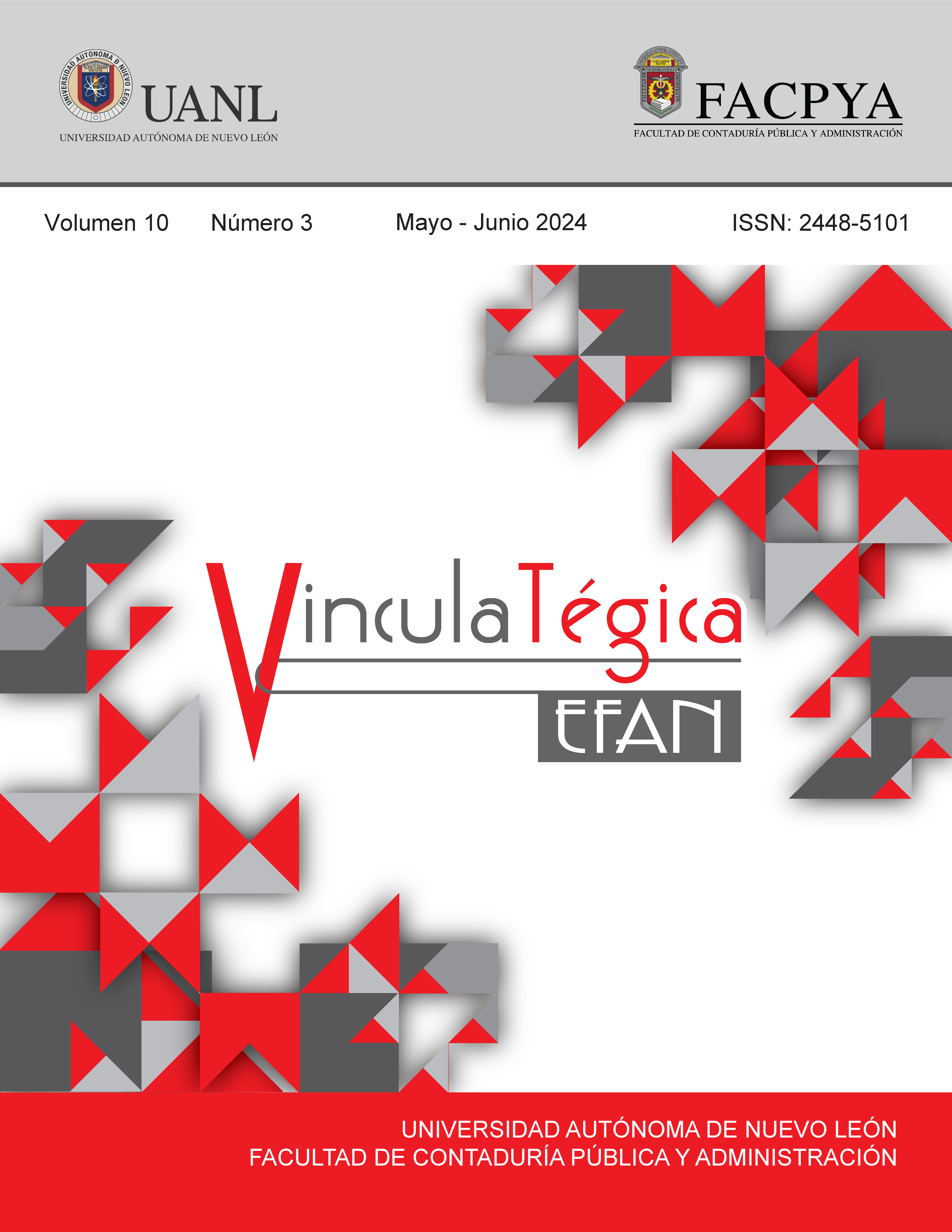A look at Risk Management in Microenterprises: A case analysis
DOI:
https://doi.org/10.29105/vtga10.3-487Keywords:
Enterprise Risk Management , Microenterprise, RiskAbstract
The objective of this work is to explore the perspective on the risks that the owner of a microenterprise adopts, and whether the organization adopts "risk management" in order to know if the organization is unaware, compliant, organic or mindful to the risks. For this, a literature review is carried out and documentary evidence and direct observation are collected, during the year 2021 and 2022. As a result, the owner perceives the risk as "an opportunity for growth." However, the results reveal that the microenterprise does not have documentary records or analysis of how risks are generated, nor how they evolve. That is why it could be considered as a company unaware of risks. However, since the owner perceives the risk positively and has kept the business running, even in front of the consequences in the pandemic, the microenterprise could be considered organic, due to the evidence of several actions developed to take and manage the risk. This highlight as an area of opportunity the formalization in terms of the risk management and the associated processes in the microenterprise mainly in the strategic management that also needs to be formalized.
Downloads
References
Banco Mundial. (2023). Global Economic Prospects. Obtenido de https://openknowledge.worldbank.org/server/api/core/bitstreams/254aba87-dfeb-5b5c-b00a-727d04ade275/content
COSO. (2004). Enterprise risk management-integrated framework. . Committee of Sponsoring Organizations of the Treadway Commission.
Crovini , C., Ossola , G., & Britzelmaier, B. (2021). How to reconsider risk management in SMEs? An Advanced, Reasoned and Organised Literature Review. European Management Journal, 118-134. DOI: https://doi.org/10.1016/j.emj.2020.11.002
Cruz M., C. A., & Martínez H., R. (2015). Factores de riesgo en méxico: análisis de los reportes anuales de las empresas pertenecientes al índice de precios y cotizaciones. Vinculatégica EFAN.
De la Rosa, Y. H., Díaz, L. L., & Rodríguez, E. F. L. . (2020). Terminología y escritura en tiempos de COVID-19. CorSalud. Revista de Enfermedades Cardiovasculares, 12(2), 184-188.
Florez Acosta, J. H., Atehortúa Becerra, S. C., & Arenas Mejía, A. C. (2009). Las condiciones laborales de los profesionales de la salud a partir de la Ley 100 de 1993: evolución y un estudio de caso para Medellín. Revista Gerencia y Políticas de Salud, 8(16), 107-131.
Instituto Nacional de Estadística y Geografía. (2022). Demografía de los establecimientos MIPYME en el contexto de la pandemia por COVID-19. INEGI.
ISO 31000. (2009). Risk Management: Principles and Guidelines. International Organization for Standardization. .
ISO 31000. (2018). Risk Management: Principles and Guidelines. International Organization for Standardization.
Kaya, O. (2022). Determinants and consequences of SME insolvency risk during the pandemic. Economic Modelling, 1-16. DOI: https://doi.org/10.1016/j.econmod.2022.105958
Lessard, D., & Lucea, R. . (2009). Embracing risk as a core competence: The case of CEMEX. Journal of International Management, 15(3), 296-305. DOI: https://doi.org/10.1016/j.intman.2009.01.003
Martínez Hernández, R., & Pastor Pérez, M. D. P. . (2018). Interrelación entre riesgo e innovación: percepción del riesgo por gestores de proyectos . Journal of technology management & innovation, 13(2), 94-103. DOI: https://doi.org/10.4067/S0718-27242018000200094
Mejía A, C., Agudelo, I., & Soto C., O. C. (2016). Planeación por escenarios: un caso de estudio en una empresa de consultoría logística en Colombia. Estudios Gerenciales, 96-107. DOI: https://doi.org/10.1016/j.estger.2015.12.004
Myšková, R., & Doupalova, V. (2015). Approach to risk management decision-making in the small business. Procedia Economics and Finance, 34, 329-336. DOI: https://doi.org/10.1016/S2212-5671(15)01637-8
Nunes P., D., Gutierrez R., I., Gonzalez B., C. A., Jaafar O., H., Ahumada M., A. M., & Rueda G., A. J. (2022). Exporters' risk perceptions during covid times: a study with Colombian and Brazilian SMEs. Procedia Computer Science, 339–344. DOI: https://doi.org/10.1016/j.procs.2022.10.161
Organización Internacional del Trabajo. (2023). Perspectivas Sociales y del Empleo en el Mundo. Tendencias : OIT.
Palacio-Fierro, A. A., Arévalo-Chávez, P. B., & Mantilla-Garcés, D. M. . (2016). (2016). Un Estudio Exploratorio a la Gestión de Riesgos Empresariales en las PYMES de la Ciudad de Quito. . CienciAmérica, 5(1), 51-62.
Tajeddini, K., Chathurika, T., Tajeddini, O., & Kallmuenzer, A. (2023). How entrepreneurial bricolage drives sustained competitive advantage of tourism and hospitality SMEs: The mediating role of differentiation and risk management. International Journal of Hospitality Management, 1-20. DOI: https://doi.org/10.1016/j.ijhm.2023.103480
Villarreal L., O., & Landeta R., J. (2010). El estudio de casos como metodología de investigación científica en dirección y ecnonomía de la Empresa. Una apicación a la internacionalización. Investigaciones Europeas de Dirección y Economía de la Empresa, 1135-2523.
Downloads
Published
How to Cite
Issue
Section
License
Copyright (c) 2023 ROSALBA MARTINEZ HERNANDEZ, Susana Karina Rodríguez Moreno

This work is licensed under a Creative Commons Attribution 4.0 International License.
a). Authors keep copyright and give the journal the right of the first publication of the work under a Creative Commons attribution license. This license allows others to share the work as long as original authorship and initial publication in this journal is acknowledged.
b). Authors may make other independent and additional contractual agreements for the non-exclusive distribution of the version of the article published in this journal (e.g., include it in an institutional repository or publish it in a book) as long as they clearly indicate that the work was published for the first time in this journal.







